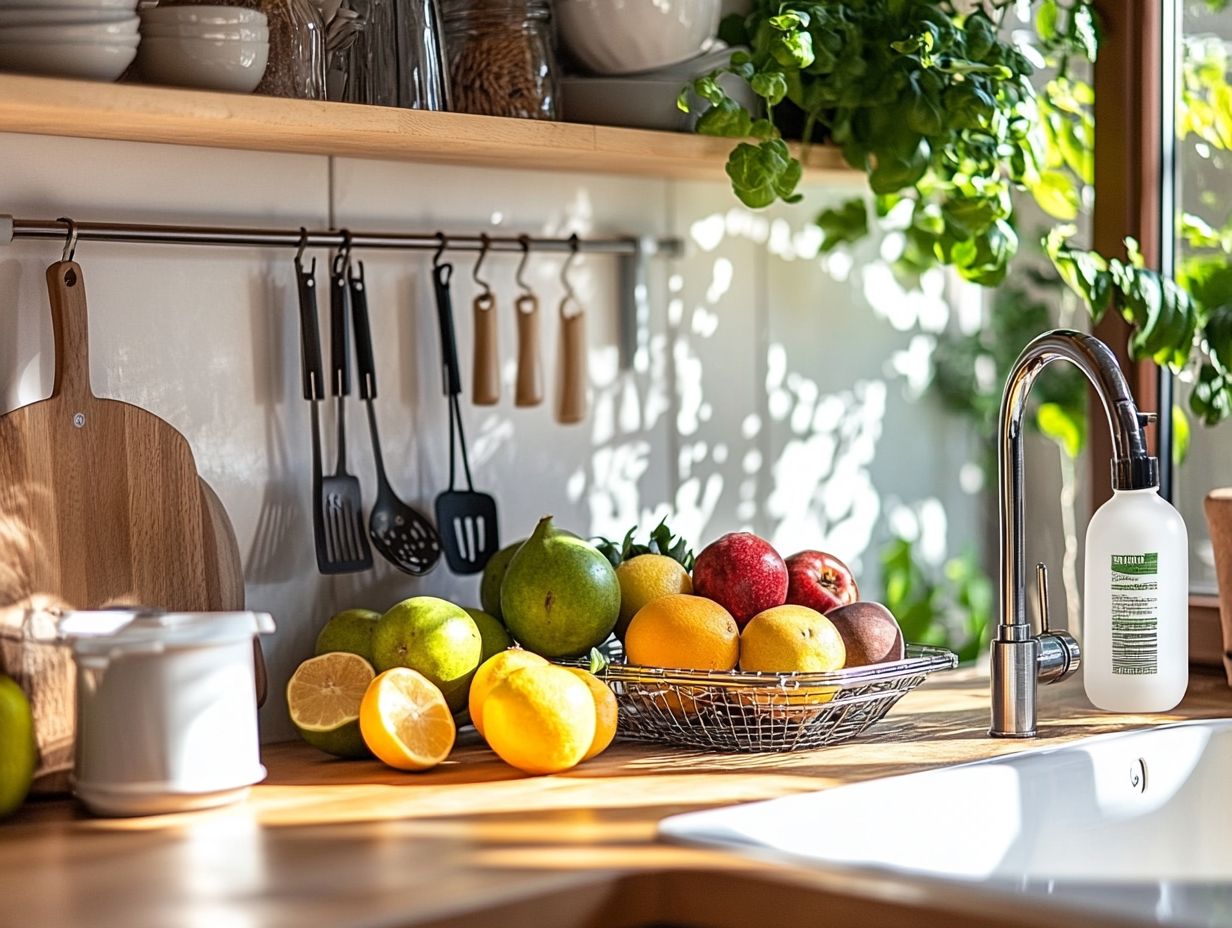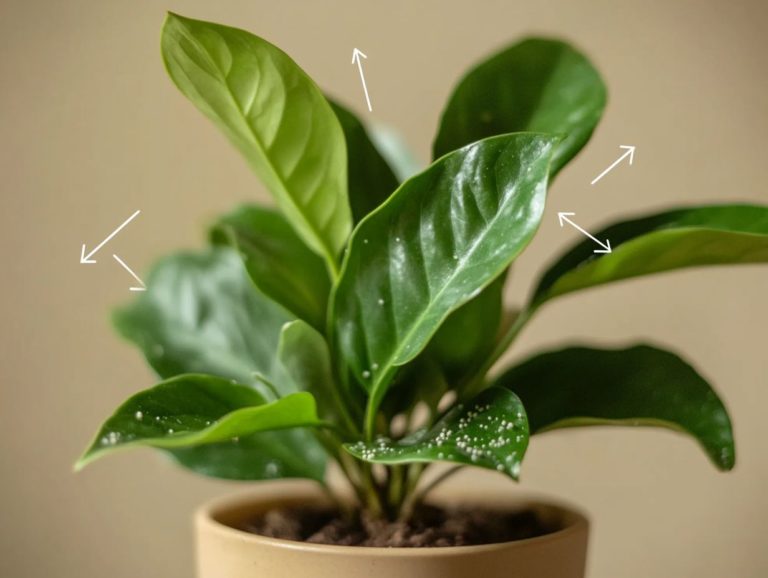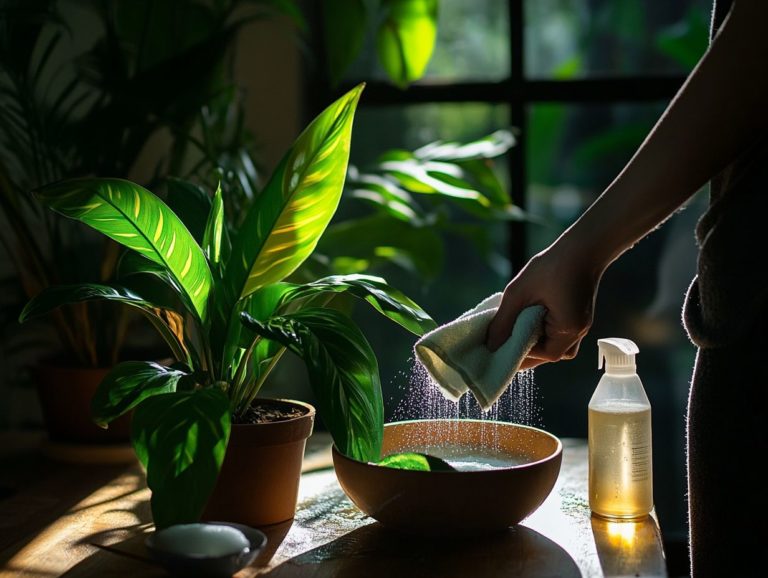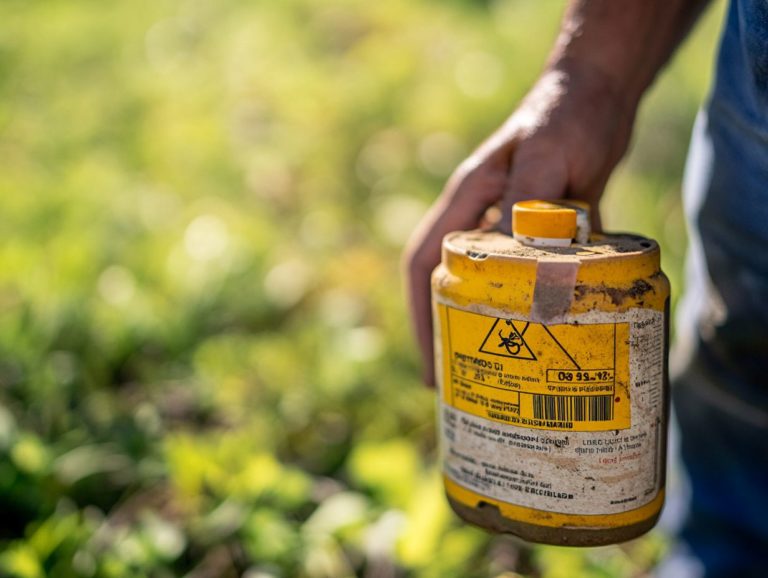The Role of Cleanliness in Pest Prevention
Keeping your living space clean isn t just about looks; it s a vital strategy for pest prevention.
Many common pests are drawn to dirt and clutter. Cleanliness is an essential line of defense. This discussion will cover the types of pests that thrive in messy spaces, how maintaining cleanliness can eliminate food and water sources for these unwelcome intruders, and practical cleaning tips to keep your home pest-free.
Implement strategies such as sealing entry points and using natural repellents to bolster your pest prevention efforts. Turn your home into a pest-free sanctuary today!
Contents
- Key Takeaways:
- The Importance of Pest Prevention
- Common Pests and Their Attraction to Dirt
- How Cleanliness Can Help Prevent Pests
- Cleaning Tips for Pest Prevention
- Other Strategies for Pest Prevention
- Frequently Asked Questions about pest control
- What is the connection between cleanliness and pest prevention?
- How does regular cleaning help in keeping pests away?
- What are some specific areas that should be kept clean to prevent pests?
- Can poor hygiene attract pests?
- How does cleanliness impact the effectiveness of pest control measures?
- What are some specific cleaning practices that can help in pest prevention?
Key Takeaways:

- Cleanliness is crucial in preventing pests from invading your home. Regular cleaning helps eliminate potential food and water sources.
- Identify common pests: Understand their behaviors to focus your cleaning efforts and prevent attraction to dirt.
- Use a combination of strategies: Sealing entry points and using natural repellents can effectively keep pests out.
The Importance of Pest Prevention
Understanding the significance of pest prevention is essential for creating a clean and hygienic home. By proactively addressing potential pest attractants, you can significantly decrease the risk of infestations from rodents, cockroaches, and various insects.
This proactive stance keeps unwanted visitors at bay and promotes improved hygiene and health for everyone in your household. In Texas, where pests like ants and mosquitoes flourish, maintaining vigilance in pest prevention is crucial.
Doing so ensures that your living space remains comfortable, clutter-free, and devoid of hidden entry points for invasive critters.
Why Cleanliness Matters
Cleanliness is essential in pest prevention. A clutter-free environment dramatically reduces attractants like food waste and stagnant water. Maintaining a clean home impacts your hygiene and the risk of pest infestations.
Regularly clean your food storage areas, manage trash cans effectively, and ensure your kitchen and bathroom remain spotless to keep common pests like cockroaches and rodents at bay.
To elevate your cleanliness, adopt specific practices like regular decluttering. This not only frees up space but also minimizes hiding spots that pests love. Effective trash management is key; dispose of waste promptly and ensure your trash cans are well-sealed.
Committing to deep cleaning during seasonal changes, especially during spring cleaning, allows for thorough organization and sanitization, targeting nooks and crannies where pests might thrive.
Don t forget about the outdoors. Clear debris, manage compost areas, and ensure proper drainage. These practices are vital for effective pest control.
This holistic approach cultivates a healthier living environment and brings you peace of mind, knowing that you re actively addressing pest issues.
Common Pests and Their Attraction to Dirt
Various pests are naturally drawn to dirt and unclean environments, making it crucial to understand the types of pests that often invade homes. The connection between cleanliness and pest presence is significant. Insects like cockroaches, ants, and silverfish thrive in unkempt spaces filled with food remnants and moisture.
Rodents, another common category, are attracted to cluttered areas with easy access to food and water sources. By identifying these pests and understanding their behaviors, you can recognize signs of a pest infestation and implement preventive measures to reduce their attraction to dirt.
Identifying Pests and Their Behaviors

Identifying pests and understanding their behaviors are crucial components of effective pest control and prevention strategies. Common pests include cockroaches and rodents like mice. They exhibit distinct habits that can signal an impending infestation.
Cockroaches are nocturnal creatures, often leaving droppings in concealed areas. Mice are constantly on the hunt for food sources, frequently making nests in cluttered spaces. By recognizing these behaviors early, you can implement effective pest prevention measures.
Look for physical indicators such as gnaw marks on furniture or insulation clear signs that mice have been around. Listening for unusual sounds like scratching in the walls during the night can also reveal a lurking pest problem.
Utilizing traps, such as snap traps for mice or sticky traps for insects, offers a swift way to confirm your suspicions and assess the extent of an infestation. When it comes to baiting strategies, particularly with poison or natural bait, it s essential to proceed thoughtfully and prioritize safety.
Act quickly! Delaying can lead to bigger infestations, turning a minor problem into a challenging and costly situation.
How Cleanliness Can Help Prevent Pests
Keeping your home clean is the best way to keep pests out! It significantly influences your ability to eliminate potential attractants. A tidy home minimizes food storage issues and manages waste efficiently while ensuring that keeping things dry is properly implemented.
By regularly decluttering and prioritizing hygiene, you can dramatically reduce the likelihood of attracting pests like cockroaches and rodents. This proactive strategy not only elevates the cleanliness of your home but also fosters a healthier environment for everyone who resides there.
Eliminating Food and Water Sources
Eliminating food and water sources is one of the most effective strategies you can adopt for pest control and prevention. Common pests like cockroaches and rodents thrive on easily accessible food and water. By managing these resources, you can successfully deter their presence.
Implementing proper food storage practices such as sealing containers tightly and disposing of expired products along with maintaining dry environments are essential steps to ensure pests don t find what they re after.
Focus on key areas like your kitchen and bathroom, where these nuisances often thrive. Regularly inspect these spaces for any leaks or dampness, as even minor moisture can attract unwanted visitors.
Make sure to dispose of trash properly, ideally in sealed bins. Take the extra time to clean up spills immediately. Keep perishable items refrigerated and securely stored, which not only keeps pests at bay but also preserves your food’s quality.
Make it a habit to check your pantry staples and promptly toss anything that has gone stale or expired. By creating an environment that is uninviting to pests, you ll significantly reduce the likelihood of their unwelcome presence.
Cleaning Tips for Pest Prevention
Implementing effective cleaning tips can greatly elevate your pest prevention strategies both inside your home and in its surroundings. By regularly decluttering your spaces and focusing on meticulous indoor and outdoor cleaning, you create an environment where pests have fewer places to hide and breed.
In the kitchen, maintaining pristine conditions by managing trash cans and promptly addressing food spills can significantly diminish the risk of pest infestations. Embracing these simple yet powerful cleaning routines enables you to proactively defend against common pests.
Start your pest prevention journey today clean your space and keep pests away!
Specific Areas to Focus On

Regarding pest prevention, certain areas of your home deserve extra attention to maintain a pest-free sanctuary. The kitchen and bathroom often emerge as hotspots for potential pests due to food residue and moisture buildup. Regularly cleaning these spaces and decluttering countertops significantly reduces the likelihood of attracting unwanted guests like cockroaches and rodents.
To maintain cleanliness, it s crucial to develop a routine cleaning schedule with the right supplies think all-purpose cleaners, disinfectants, and a trusty mop. In the kitchen, wipe down surfaces daily and tackle spills promptly to prevent food particles from luring pests. For bathrooms, ensure proper drainage and seal any leaks to help control moisture levels.
Using airtight containers for food storage and regularly emptying trash bins can further diminish pest risks. Consider placing traps and natural deterrents, such as peppermint oil, in vulnerable areas. These practices will elevate your home’s cleanliness and create an unwelcoming environment for pests.
Other Strategies for Pest Prevention
Beyond cleanliness, employing a range of pest prevention strategies helps you take a comprehensive approach to keep your home pest-free. Seal entry points such as cracks, crevices, and gaps around doors and windows to significantly diminish the chances of pests like ants and cockroaches finding their way inside.
Using natural repellents effectively deters pests. Combine these measures with regular outdoor cleaning to create a holistic pest prevention plan that protects your space.
Sealing Entry Points and Using Natural Repellents
Sealing entry points and using natural repellents are essential for effective pest control strategies. Conduct a thorough inspection of your home for cracks, gaps, and other potential entryways to proactively prevent pests from invading.
Using natural repellents made from plant extracts, such as essential oils, offers a non-toxic alternative to harsh chemicals. When combined with proper moisture control and drain cleaning, these practices create a strong barrier against common pests.
Enhance your sealing efforts with materials like silicone caulk, weatherstripping, and foam insulation in high-risk areas like windows and doors. Regular inspections help identify potential issues before they escalate.
Maintaining optimal humidity levels ideally between 30-50% is vital, as excessive moisture can attract pests, including mosquitoes and silverfish.
For effective natural repellents, recipes that include a mix of neem oil, vinegar, and water, or a blend of peppermint and tea tree oil, have shown remarkable success. These methods protect your household and contribute to a healthier living environment.
Frequently Asked Questions about pest control
What is the connection between cleanliness and pest prevention?

Cleanliness plays a crucial role in pest prevention because pests are attracted to areas that provide them with food, water, and shelter. By keeping your surroundings clean and free of clutter, you eliminate their food sources and hiding spots, making it less likely for pests to infest your space.
How does regular cleaning help in keeping pests away?
Regular cleaning helps prevent pest infestations by removing crumbs, spills, or food debris that attract pests. It also helps identify and address potential entry points or sources of water that may be attracting pests.
Start these simple habits today for a pest-free home!
What are some specific areas that should be kept clean to prevent pests?
Keep kitchens, bathrooms, basements, and attics clean. Outdoor spaces like yards and gardens should also be tidy to stop pests from getting inside.
Can poor hygiene attract pests?
Poor hygiene attracts pests by providing food and shelter. Rodents and cockroaches thrive in dirty spaces, so maintaining cleanliness is key.
How does cleanliness impact the effectiveness of pest control measures?
Cleanliness boosts pest control effectiveness by allowing treatments to reach pests directly. A clean environment discourages pests from returning, minimizing the need for further treatments.
What are some specific cleaning practices that can help in pest prevention?
Effective cleaning practices include regular vacuuming, mopping, and wiping surfaces. Seal cracks, properly dispose of garbage, and store food in airtight containers.






